Tips for choosing a plumbing hose in the shower

The shower is a rather complicated device that has a lot of features and subtleties. In this article, we'll talk about which one is better to choose a shower hose, what it is made of and what kind of shower it is.

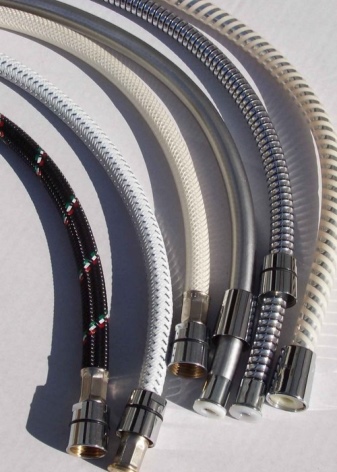
Peculiarities
To understand which shower hose is better to choose, you should understand what designs of such devices exist today, what materials they are made of, and what categories of connections exist. Structurally, such a part can consist of a plastic or rubber tube located inside, a solid braid of a solid type and a pair of connecting type nuts, which allows you to attach a watering can and connect the hose to the tap.
In some solutions, the outer protective braid is not continuous or may not be present at all. Protective braid is made of stainless steel or plastic, which was previously twisted in a spiral. It is needed in order to protect the sealed tube inside from deformation of the mechanism and give a better look to the entire device. Continuing the topic of protective winding, we add that its design will significantly affect the price.
Expensive models or solutions of the middle price are protected against twisting and malfunction.


Length is also a criterion for hose selection. It provides water supply to any part of the bathroom. Common indicators range from 125 to 200 centimeterswhich is usually enough.
Hose diameter is half an inch at both ends, although 3/8 inch models are also available... In this case, the connection is made with watering cans and mixers using special adapters. There are also combined solutions, where a narrow nut is equipped with a metric type thread, and a cone-shaped one with an inch thread.

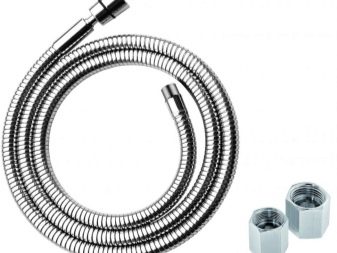
Dimensions (edit)
Sizes were mentioned a little above, but this topic should be covered in more detail. The hose can be short or long. Everything here will depend on what is required for each specific case, as well as on the physical size of the bathroom.
The standard in the issue under consideration is considered to be a length of 1.5 meters... Such hoses are the most popular, provide complete motor freedom, and usually they reach the most remote places of the shower and these places can be washed without problems. At the same time, such a hose is not very long and will not interfere with anyone, and twist it very strongly, too, unnecessarily.
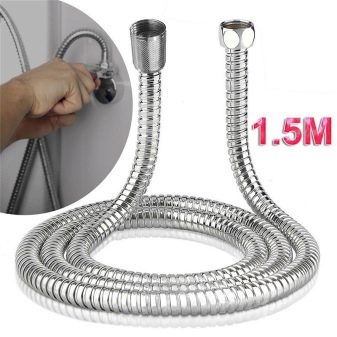
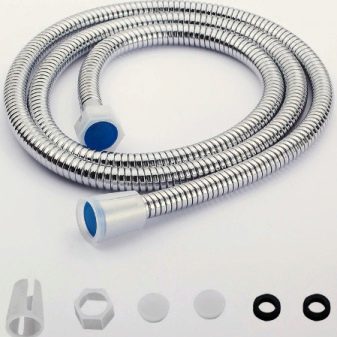
But as mentioned, the length of the hose may vary depending on the model. You can find a variety of options in stores. For example, 1.75 or 2 meters. True, the latter option is quite difficult to find, and such solutions are most often suitable for very high shower panels. When choosing the length of the product, it is imperative to take into account the features of the shower stall or bath, as well as its dimensions.
A hose that is too long or too short can cause a lot of inconvenience. The choice of such a product should be treated as responsibly as possible.
Another important aspect in terms of sizing will be the thread diameter of the nuts that are found at both ends.
The standard, as mentioned, is half an inch, but there are 3/8 inch models.It should be said here that it is extremely important that the size of the hose connecting parts coincides with the size of the same elements that are located on the watering can and the mixer. If this is not the case, then it will be necessary to use special adapters.

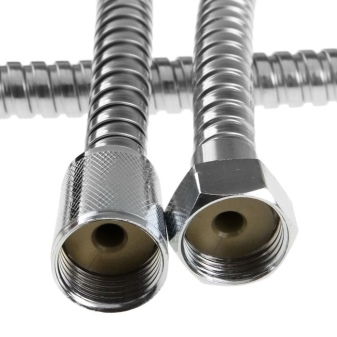
An important point for a complete understanding of the issue is that today the inch metric system in determining the threaded size is used everywhere, but it differs from the metric system that we use, so there may be small inconsistencies. Watering cans and hoses where our metric system is used is almost impossible to find. To find out by eye what kind of thread is used in a particular model is difficult even for a professional, not like an ordinary person. But as an option you can take the old version to the store before purchasing a new one and simply compare them.
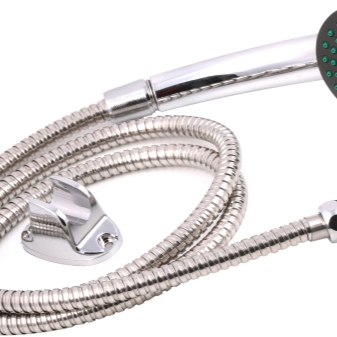
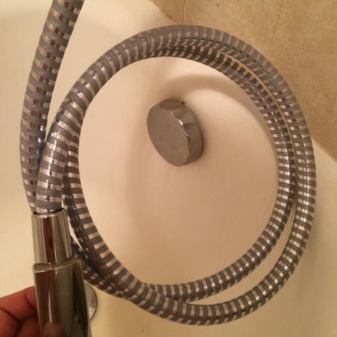
Design
The design of this device is quite simple and consists of the following parts:
- inner hose;
- winding;
- various parts of the connecting type.
The first element is usually made of plastic or a single piece of rubber. There are also solutions when the hose is made of plastic that does not have a winding. Such a product looks beautiful, but it will be relevant only for cases when the water meets the standards, otherwise, very quickly, various kinds of deposits will begin to appear on its walls, which will significantly reduce the aesthetic characteristics of the device.

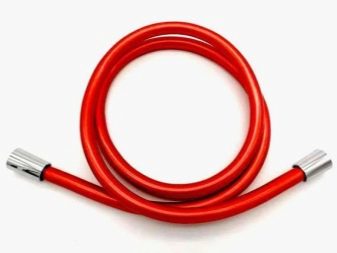
Winding is necessary as the hoses are subject to different loads. We are talking not only about the effect of high temperatures, and the effect is permanent, but also about serious physical stress. This usually forces manufacturers of such components to use hose braid materials that are as resistant to wear as possible. Usually these are polymer materials, chrome-plated threads, nylon and metal.
If you look at the winding as a selection criterion, then it should be noted that the best solution would be the option where there is still a system, which prevents the hose from kinking.
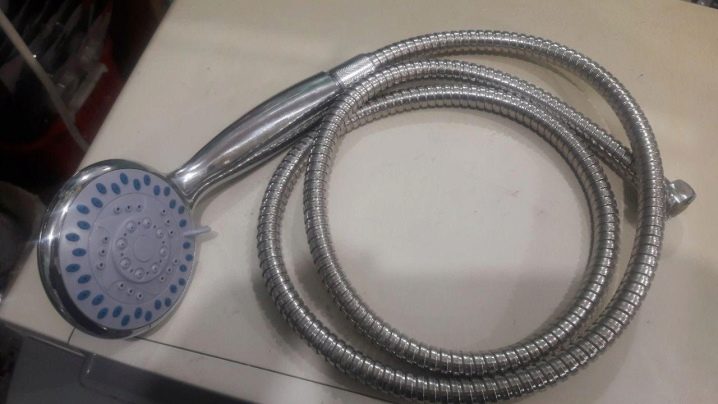
Connection elements are another component. The hose has a thread for a pull-out spray at one end and at the other for connection to a mixer. For installation, cones, a nut with an external thread and a nut with an internal thread are used. The nut is screwed onto the mixing nipple and the watering can is screwed onto the cone-type hose connection. It often happens that the cone receives a hinge-type connection, which provides free packing rotation and protects the product from twisting.
Also, do not forget that there must be a gasket in the connecting points that will protect them from the effects of water... In general, as you can see, there are no difficulties in the design of the type of hose under consideration.
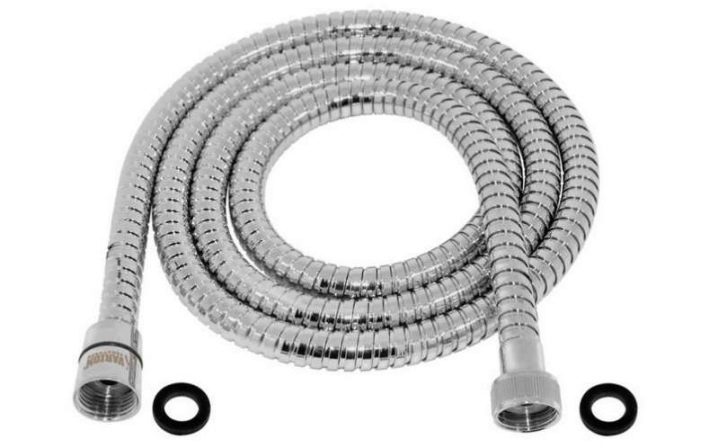
Manufacturing materials
The most popular materials for the manufacture of shower hose braids today are:
- silicone braided solutions;
- metal version;
- plastic option.
The metal winding is the classic version. Most often, stainless steel is used for its manufacture. Less commonly, you can find options from bronze or copper.... You can find out exactly such a body by a spiral shape. It gives the device flexibility while protecting the inner tube from kinks and bends. The hose looks very nice, may have a chrome surface. The cost of such solutions is quite low, although they also have disadvantages. First, they are not durable. Secondly, after a while, the winding exfoliates, breaks and simply unwinds, which can cause damage to the inner tube. In addition, dirt and limescale are very visible on the metal.
If we talk about a PVC-type case, then it copes well with exposure to high temperatures.
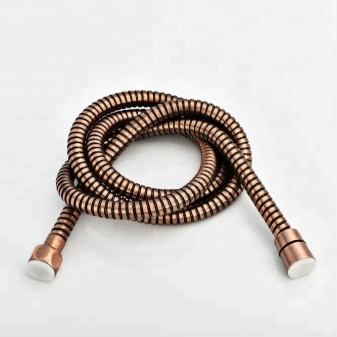
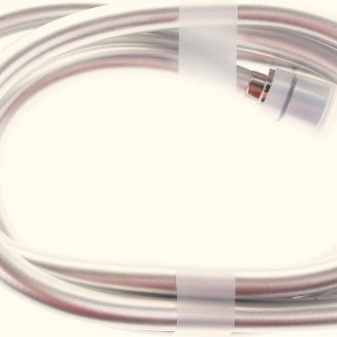
It is distinguished by high flexibility, corrosion resistance.It is easy to clean and can be spiral or smooth. In stores, you can find various options - colored, transparent and chrome. The latter practically do not differ from metal ones in their characteristics, although outwardly they look more impressive. But this is only the first time. The fact is that because of not too high-quality water, smudges and blackened spots quickly appear on them.
The main the disadvantages of such a winding will be a tendency to cracking and drying out... To extend their service life, it is better not to wind them too tightly, since such a case cannot be repaired. There are also plastic options, reinforced with metal wire. Such solutions have greater strength, more durable, and are also resistant to microcracks and folds.
A rather interesting solution may be a metal hose with a silicone coating.
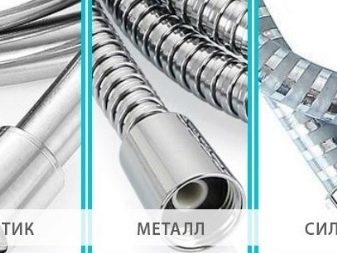
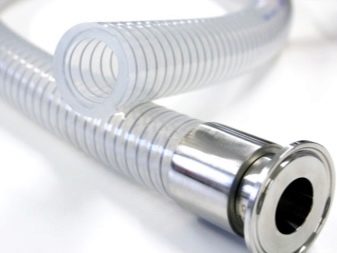
An additional layer provides the metal with protection against delamination, and also significantly increases its durability. It also increases flexibility and firmness. Such hoses have a longer service life, less risk of leaks and they retain their original appearance longer, since fungus cannot appear on the silicone. The disadvantage of this option will be greater weight and higher cost.
Types and their purpose
In plumbing stores, you can usually find four categories of shower hoses:
- for a bidet or washbasin;
- for the shower;
- for bath and jacuzzi;
- for a hydromassage box.
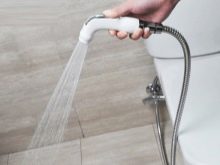
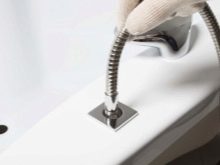
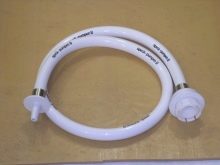
This classification is rather arbitrary due to the fact that there is no clear distribution between them. Any hoses can be used in various situations, depending on the length, size, material of manufacture, the presence of humidity in the room, and so on. Now a little about the hoses themselves.
If there is a need to buy a flexible hose, then a plastic solution will be of the highest quality due to the fact that it bends easily.
In addition, it is hygienic in its properties, unlike metal, which can oxidize from exposure to water.
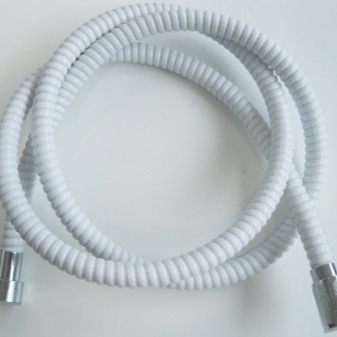

The metal version is also good, because it is more protected from physical damage. In such models, by the way, the inner hose can be plastic or silicone, it will not accumulate any deposits, which will have a beneficial effect on its appearance. But, of course, everything here will depend on the needs of people in each specific case. In addition, much more will depend on what kind of interior in the bathroom or shower is made and how this or that type of hose for plumbing in the shower will be suitable for it.
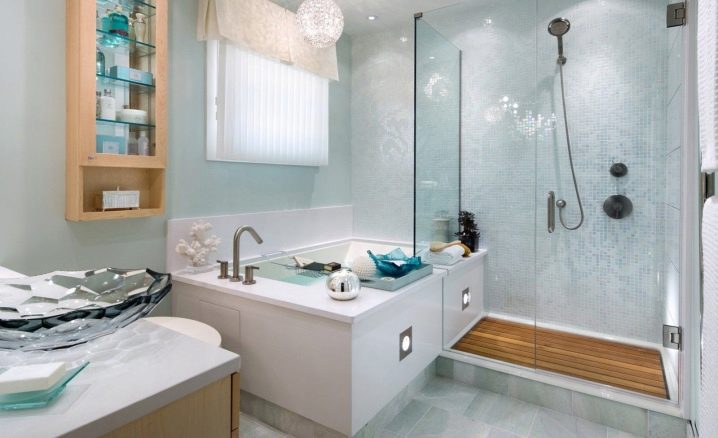
What is the best choice?
To date, the choice of accessories in question is very rich. And many will be interested in the question of how to become the owner of a good plumbing hose in the shower, so that it fully satisfies all the necessary needs and looks great as an element of this or that interior. This can be done according to a number of criteria:
- manufacturer;
- the material from which the hose is made;
- length;
- equipment;
- visual inspection.

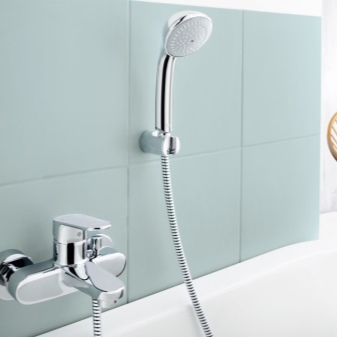
Now let's talk about each of the criteria in order. If we are interested in a manufacturer, then it is not surprising that products of German companies producing sanitary products are considered the most reliable on the market... As a rule, all these products belong to the premium segment. They are of the highest quality, anti-twist hose, stylish design, and a fairly long service life.
If German solutions are too expensive, then in the middle price segment, you can pay attention to the products of companies from Russia, the Czech Republic and Hungary.

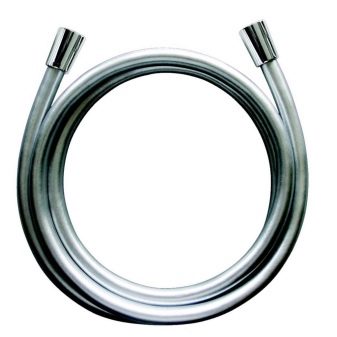
The next important point is the material of manufacture. The most reliable and durable will be a silicone braid... You can not be afraid to bend such a hose, scratch the bathroom with it. Moreover, it is very hygienic. Also, a good solution would be hoses that have a metal braid.
Another aspect is length.It affects not only the usability, but also the service life. It is extremely easy to make a choice according to this criterion. It is enough to understand how such a hose will be used, as well as to measure the dimensions of the bath or shower.
If the option is purchased exclusively for washing, then a length of 125 centimeters will be more than enough.
If the bath or shower is small or medium in size, then you can use the 150 cm version. If the bathroom is large or there is a spacious shower stall, then you can take the 200 cm version... Let's say that a correctly selected hose will make it possible to avoid problems with permanent twisting of the core, as well as problems during use.
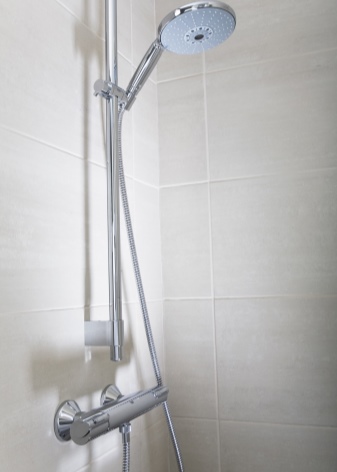
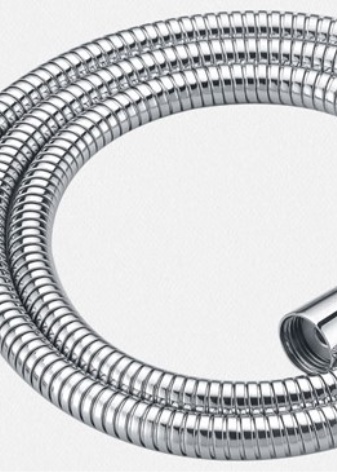
Another criterion is equipment. The parts where the connection of the device in question with the mixer and the watering can is carried out have a swivel-type cone or special bearings, which do not allow the device to twist. Here, too, German models are recognized as the best. Their reliability depends on a special system called "Anti-twist", which prevents kinks where the hose is connected.
You should also pay attention to the conformity of the threaded moments of the hose connections with the shower and mixing fittings. It will not be superfluous to have an antibacterial type coating on the hose.
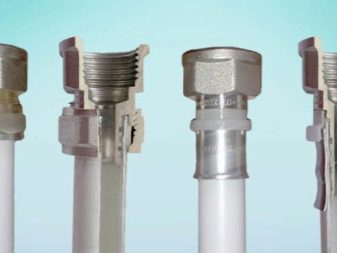
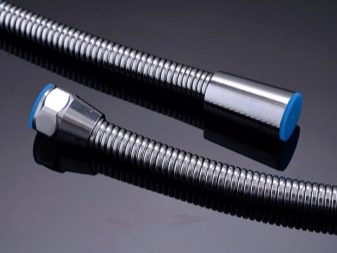
The last point is a routine physical examination for damage and inconsistencies. It allows you to identify a number of shortcomings, if any, even before installing the device into the system.
Before purchasing a shower hose, you should pay attention to some signs that indicate that the product may be of poor quality. These include:
- the presence of burrs;
- thickening on the product;
- inhomogeneity of the braid color;
- not too uniform thickness of the corrugated braid;
- the presence of sagging at the joints;
- the presence of some kind of thickening on the device itself;
- uneven threads on the connections.
Even if at least one of the mentioned drawbacks is present, it would be better to look for other models.
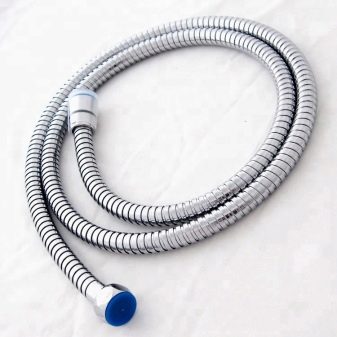
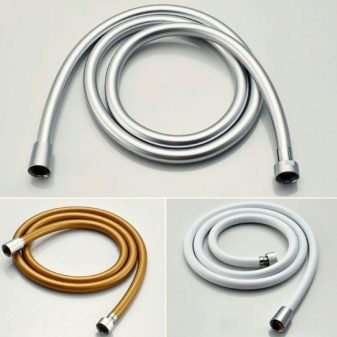
In addition, recognized manufacturers provide a set of different gaskets with the device. Also, the packaging must contain full information about the product, which will include the length of the product, the material from which the braid is made, the size of the threaded connections, the completeness, and so on. In general, as you can see, choosing a plumbing hose in the shower is not too difficult. The main thing is to know by what criteria you should choose such a product, and also take into account the main features of such hoses for plumbing in the shower.
Tips for choosing a plumbing hose in the shower are in the next video.













Thank you for this paragraph: "If you look at the winding as a selection criterion, it should be noted that the best solution would be with a system to prevent kinking of the hose."
The comment was sent successfully.